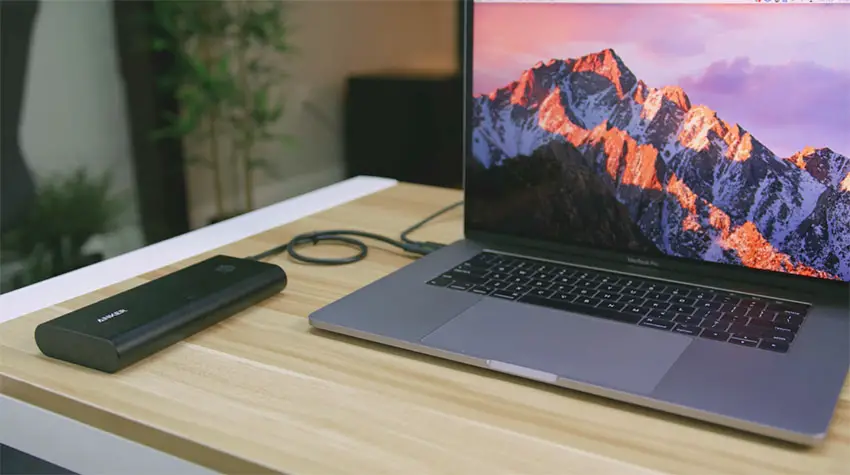
- Two screens for mac book pro movie#
- Two screens for mac book pro 1080p#
- Two screens for mac book pro drivers#
But USB-C remains the best way to hook up a MacBook Pro to an external display. The latest Apple silicon 14-inch and 16-inch MacBook Pros do come with HDMI connectivity. The one catch is that combining 4K-plus resolutions with excellent connectivity doesn't always come cheap. Happily, 4K monitors can now be had relatively cheaply, so there's little reason to compromise on resolution and pixel density. Even 1440p or QHD is marginal in terms of pixel density.

Two screens for mac book pro 1080p#
For that reason, we'd rule out 1080p panels. Higher resolutions also allow greater desktop space for accommodating the toolbars and menus that come with productivity apps, including image and video editing. The better the pixel density, the crisper MacOS will render fonts and icons. MacOS is expressly engineered to look great with higher pixel densities. Obviously, gaming of any sort is a different beast and not sure how that would perform with this type of setup but suspect it would have issues with gaming.MacOS works best with high-resolution displays.
Two screens for mac book pro movie#
When I say good, I mean good for standard productivity, non DRM movie watching, etc. In all it's a good solution for an M1 but obviously it needs refinement/improvement. unlock with Apple Watch does not currently work, since the OS thinks the screen is being recorded. This happens on all displays while displaylink is activeģ). While displaylink app is active, video from the Apple TV app only shows as a black screen. Clamshell mode needs to implemented, currently its all displays active or none while using Displaylink in extended desktop modeĢ).
Two screens for mac book pro drivers#
The fast performance might be due to the unified memory architecture and will probably get better since the displaylink drivers haven't been optimized for the M1 chip yet (the are coded for Intel arch as far as I know). If you got what you expected in every case, I would not use such strong terms to describe DisplayLink.Īctually the Displaylink performance on an M1 MacBook Pro is very good and using a dock such as the HP Universal USB-C G2 dock (5TW13UT), I have 2 external 27" Acer Predator monitors at 1440P plus the built in display active in extended desktop mode. I think the Big Surprise for a lot of Hub/Dock buyers is that they thought they were getting a "real" display, but actually got a DisplayLink "fake" Display. There have been cases where MacOS changes completely Borked DisplayLink software, and it took some time for them to recover. These displays depend on DisplayLink software, and are at the whim of Apple when they make MacOS changes.

But that is NOT the same as the computer supporting a second, built-in, accelerated display. It is really nice to know that you can use a DisplayLink display if you MUST have an additional display for some of the types of data I mentioned. It may be acceptable for a second display showing slow-to-change data such as computer program listings, stock quotes, or spreadsheets, but NOT for full motion Video, and mouse-tracking on that display can lag, and can make you feel queasy. It is not a true "accelerated" display, and it suffers from lagging.

DisplayLink technology creates a "fake" display buffer in RAM, sends the data out over a slower interface to a stunt box with DisplayLink custom chips that put that data back onto a "legacy" interface.


 0 kommentar(er)
0 kommentar(er)
